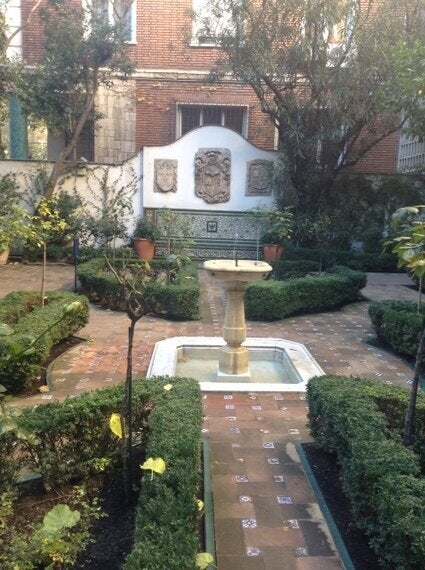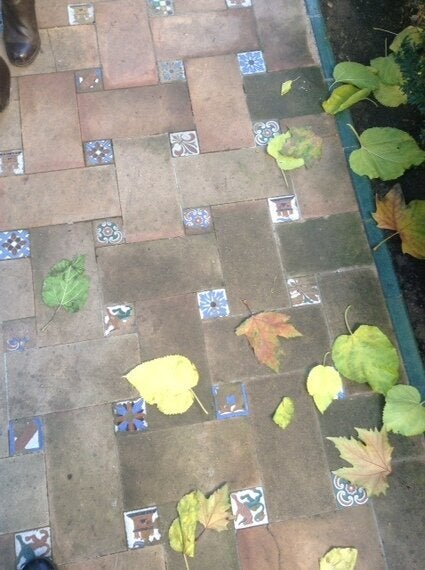Air travel is supposed to be a thrill and a delight. The limousine to the airport, followed by seamless check-in, your bags carried through security by helpful and obliging staff. A light snack as a pause before boarding, then sit back in your broad comfortable seat. All that remains before take-off is to peruse the in-flight entertainment, sipping champagne, in the almost church like silence around. The flight passes and you disembark, your bags again carried through to the car waiting to swish you into the city and your beckoning hotel.
Then you actually wake up! It is 6.30 in the morning; Mrs Sungoose does not want to be awakened so you quietly fumble around trying to find the last few things you need, then trudge in heavy rain to the underground. Battered and clattered, shoved and trodden on, you arrive at the airport to stand at the back of a check-in line. Not being having been able to print the boarding pass means that you have to wait while your fellow travellers wrestle what appears to be their entire households in monumental suitcases along the queue and onto the scales where they fight futile battles to avoid surcharges for shipping the family anvil back to Spain in their hand baggage. Once checked-in the long queue for security awaits, followed by the long queue for passports, followed by the long queue to show your boarding pass, followed by the long queue to actually get on the plane. Aboard your knees are scraped and you can hardly breathe out your neighbours are so close. But two and half hours later you are squeezed out like a slow birth and you can actually begin the pleasure and adventure of being abroad.
Madrid is one of the great European capital cities. I have been coming here since I was at university. However, my visit frequency dramatically increased when my friend Laura moved here 17 years ago. She suggested that I attend the Feriarte which is still the best Spanish annual antique fair. I followed her advice and I have since made friends with several of the dealers and consequently find it highly productive to come several times a year. Sitting with Laura in the hotel bar, we reminisce as I order cava for her and a vodka and tonic for myself. The waitress comes over to our table apologetically, saying that they have run out of cava and would Laura accept a glass of real champagne, Pommery, instead, for the same price. She generously accepts. They bring it along with a huge bucket of ice. It turns out the bucket is in fact my glass, and into it they tip half a bottle of Ciroc vodka and a splash of tonic. This is quite honestly the most enormous drink I think I have ever been poured. I don't so much drink it as take a swim in it.
Laura, since leaving London with no command of Spanish at all, has become one of the foremost translators in the art world. She is constantly immersed in museum and gallery work and she could work 24 hours a day; she sometimes does. But she has taken time out from her computer to dine with me. We talk about our friends in the business, who all seem to be changing or moving their careers. We talk about Masterpiece and what she hears about the fair from several of her galleries. She is often amused to hear gossip, not letting on that she knows someone on the inside of the organisation. But most of all we talk about how Spain has suffered since the economic downturn of 2008. The local trade has been adversely hit and she is very worried about the future. The economy has affected other industries far worse than the art world. In Spain youth unemployment is at record levels, and in certain parts of the country it has reached over 50%. Spain is really suffering.
We dine in one of my favourite places. Comma El Puchero. In the half-basement, the 10 or so tables have their familiar red and white check tablecloths and red pottery decoration. The waiter is a bit frosty until he drops a fork. He then giggles and though he is grizzled, gravel-voiced and 70 odd years old, he flutters around our table and looks after us with charm, wit, generosity and grace. Crispy brown chicken croquettes with arrestingly soft, smooth, creamy interiors and Morcilla black pudding arrive. Spanish black pudding is wonderful; it has rice in it hugely enhances the flavours as well as giving the meat an almost nutty, chewy quality. Both dishes come with fine straw chips - indeed the presentation is as if each dish were coming in a basket filled with straw. The chips are really crisp and sharp with salt, and you can taste the oil in which they were fried. This perfect beginning is followed by a dish of exquisite tiny kidneys presented in an aromatic rich stock gravy. The dish is complemented by tiny wild mushrooms giving extra flavour and a delicate bite alongside the soft buttery kidneys. The house Rioja helps too, being both light and strong in tannin which helps cut through the richness. In Spain everyone eats late and it is a real challenge to be the last to leave the restaurant, but we manage it.
The following day I speed with my friend Antonio around the dealers and the auction houses. There are very few dealers who now actually have shops so we spend half the day jumping in and out of taxis as we criss-cross the city. At each destination, he makes a call and we are led up a staircase into a warehouse space. Everything is tucked away. Despite a bewildering number of visits, the best is always in Antonio's own warehouse. He has an amazingly eclectic eye, loving everything from South American 17th century ivory figures to contemporary art and design, and really everything in between as well. He shuffles along rubbing his short gray hair, either smoking or randomly ruminating like a thoughtful cow. He usually wears an indeterminate pair of squishy shapeless shoes. Today he decided to dress up for me and has put on his suede brogues. They look sparklingly new, though he admits he has owned them for 15 years. This is only their 4th outing. They are clearly staggeringly uncomfortable, as he shuffles along in a more pained than the usual way. At his warehouse, he reveals a fabulous black and red lacquer cabinet on stand and a Neoclassical giltwood mirror, both items way better than anything we have seen on our laborious travels in the city. We repair to a local tapas bar and plan his next move. He needs to save money to buy a flat. But every time he has money, he buys an object or a painting. It is his addiction. But the wonderful thing is that though he buys all the time, he almost never buys badly.

Before leaving Madrid I decide to take a visit to the Sorolla Museum; the beautiful private house built by the artist himself. It was his studio, showroom and home. Today it retains his objects, his sketches and a good selection of his work, particularly portraits of his family. Though the paintings are charming and he was clearly a great talent, the real joy of the place is the space itself. Sorolla created the ultimate house for parties, with big airy rooms interconnecting, full of visual curiosity. In particular the dining room, painted with bright floral swags and his female family members seemingly pinning them up. As you turn a corner, you can look through to other rooms, or see the garden or across the courtyard. I wander around delighting in the tiny formal garden with its paths and benches inset with tiles and the fountains playing in a way reminiscent of the Moorish parts of southern Spain. It was a truly restful quiet moment to brace myself for the hurly burly of the flight home.

